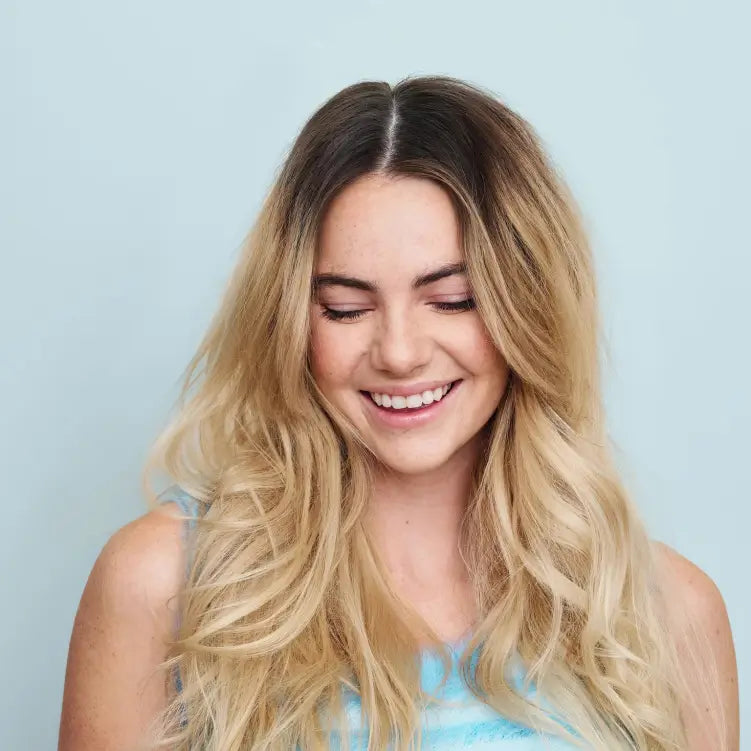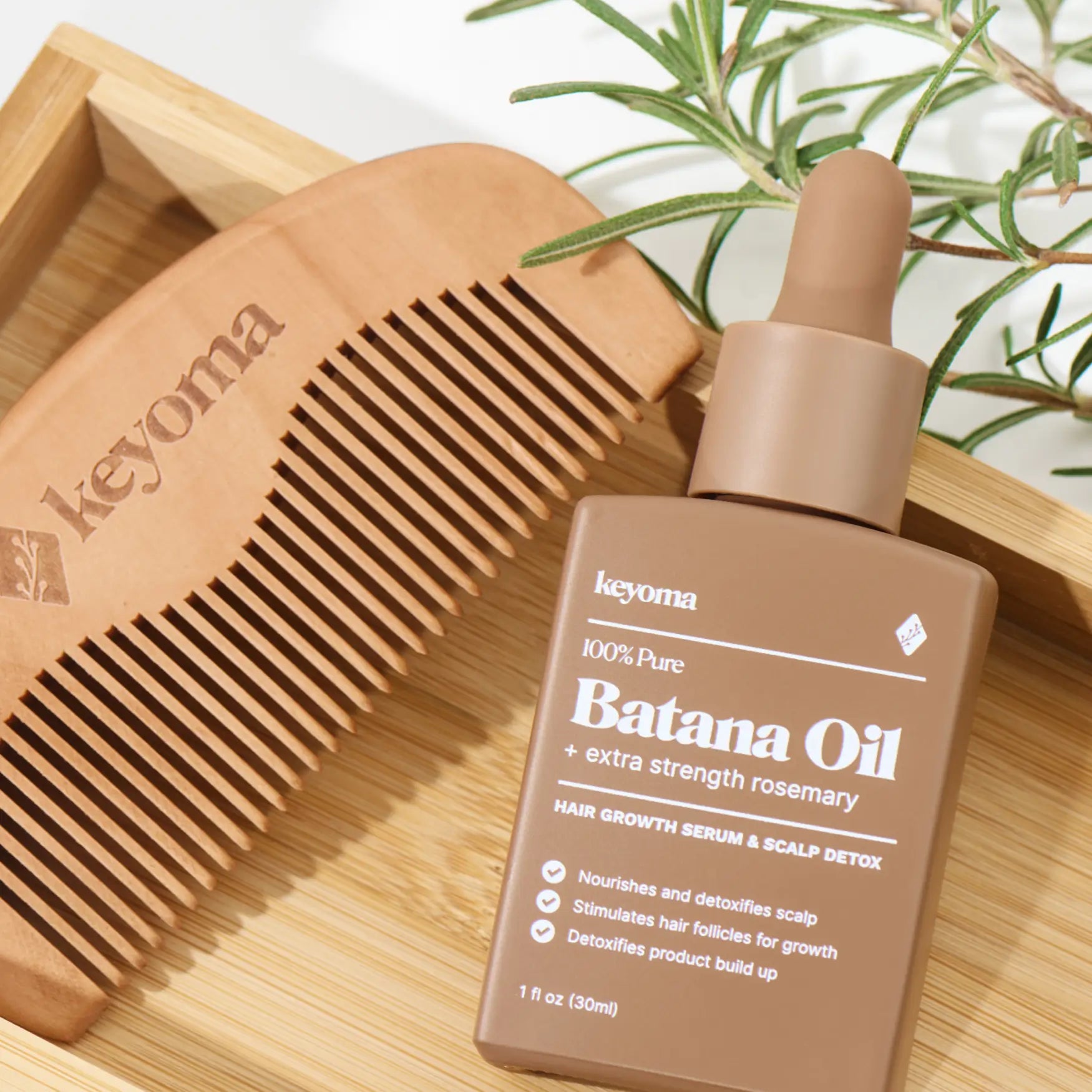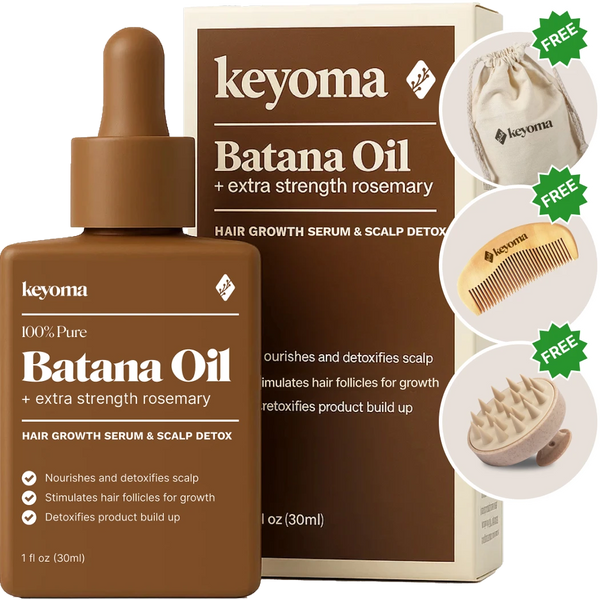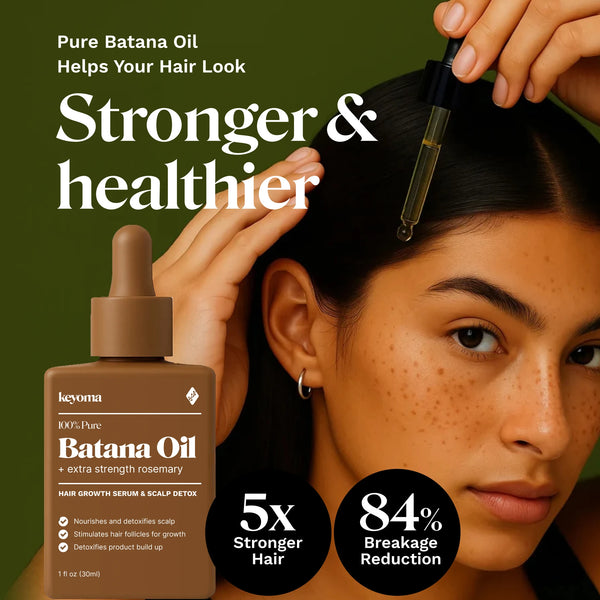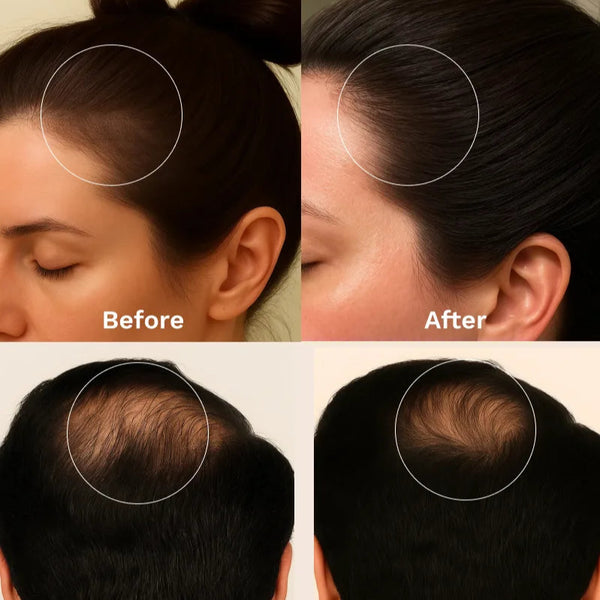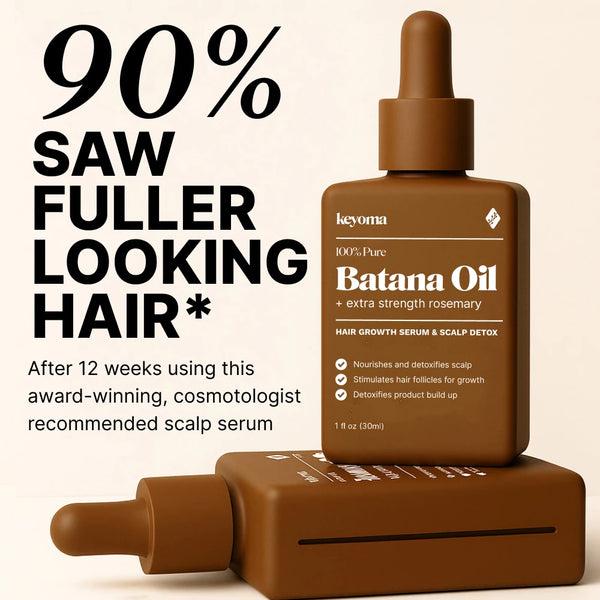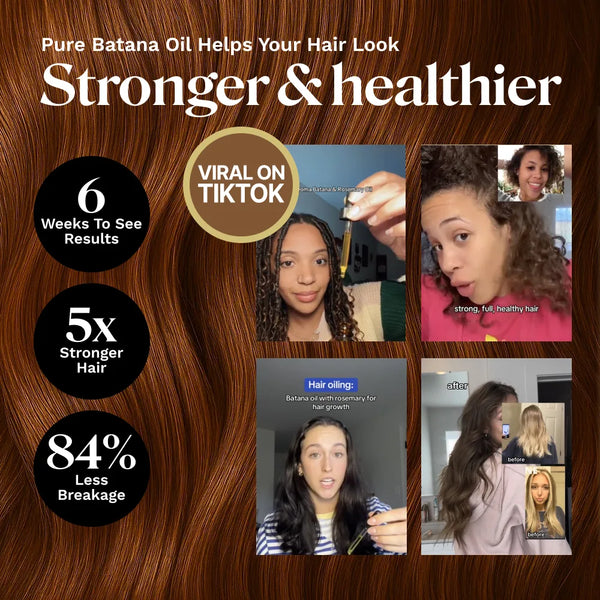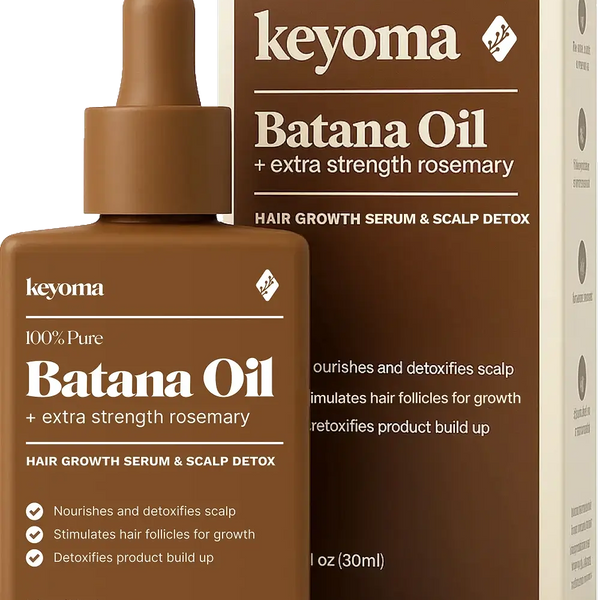Does Scalp Oiling Promote New Hair Growth: Facts, Myths, and The Best Scalp Oils
Published on
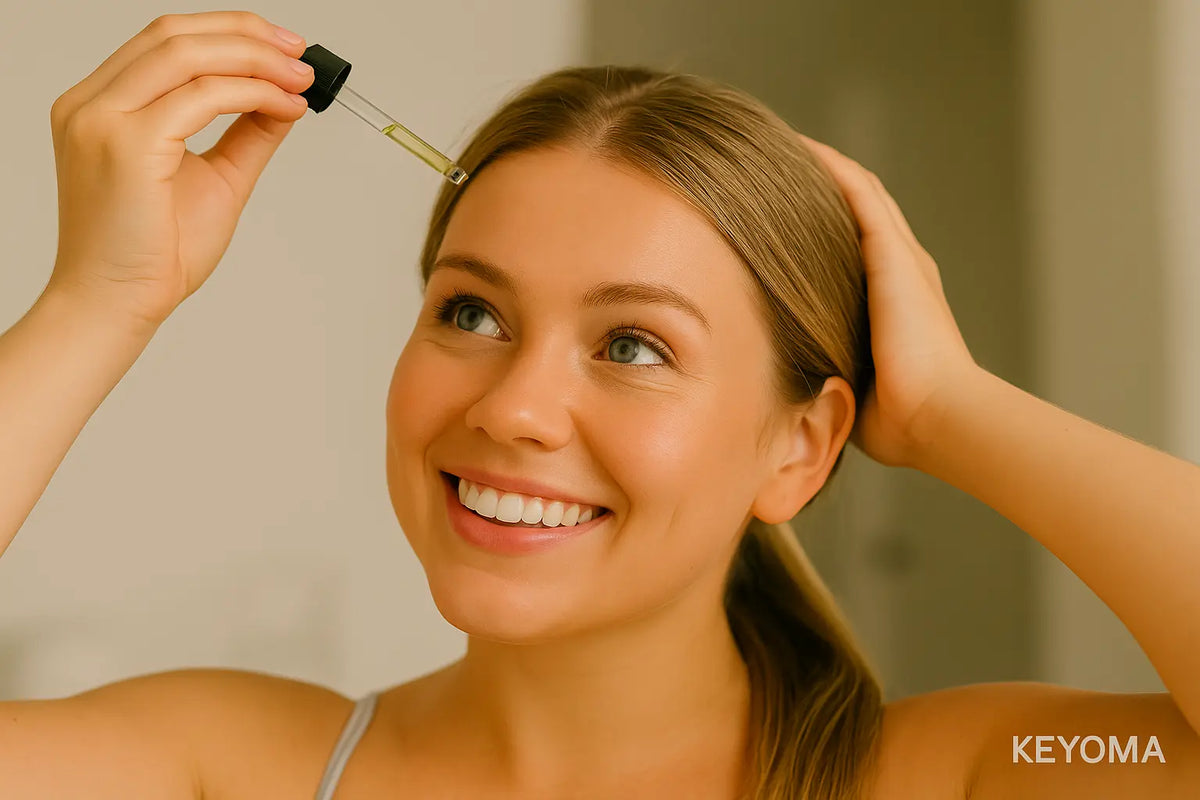
In this article
The short answer is yes, scalp oiling can help promote new hair growth, but it works in a very specific way. When you apply oils and really work them in with your fingertips, you’re not just coating your scalp, you’re also improving blood flow to the roots, calming inflammation that builds around the follicles, and keeping everything nicely moisturized.
What that says about scalp oiling is that it promotes growth by keeping the scalp environment from becoming too vulnerable to the conditions that trigger hair loss.
And that’s worth mentioning, because positive results from scalp oiling often lead to the misconception among believers that it’s the ultimate cure for hair loss, when it’s not.
As much as I am a fan of natural oils myself—and I can say they’ve helped me grow some baby hairs here and there—there are limits to what a home remedy can do, especially when genetics or medical conditions are in play.
That’s why in this article, I’ll walk you through what scalp oiling actually helps with, clear up a few myths that keep getting repeated, and show you which oils have real evidence behind them along with safe ways to fit them into your routine.
How Scalp Oiling Promotes New Hair Growth: The Facts
Moisture Barrier & Reduced Breakage
Scalp oils are made up of fatty acids like oleic, linoleic, and lauric, which interact with both your scalp and the cuticle layer of your hair.
Once applied, these fatty acids spread along the strand and create a light film that slows water loss while filling in the tiny gaps along the shaft. That protective layer keeps strands flexible instead of brittle, making them less likely to snap during brushing or styling.
In that way, oiling supports growth not by magically creating new hair, but by helping you hold onto the length you already grow. Over time, this simple habit means your hair has a better chance to stay intact long enough to actually show up as thicker, longer growth.
Blood Circulation and Relaxation (via Scalp Massage)
In Ayurvedic tradition, scalp oiling has always gone hand in hand with massage. And it’s with good reason this practice has been passed down. More than just a soothing ritual, it has real physiological benefits.
Pressing and moving your fingertips across the scalp stimulates the tiny blood vessels under the skin, which boosts circulation. More circulation means more oxygen and nutrients delivered to the follicles, and that extra supply directly fuels the cells responsible for producing new hair strands.
In effect, it helps follicles stay active in the growth (anagen) phase instead of slipping too soon into resting or shedding.
At the same time, the calming nature of the ritual eases stress, which is tied to hair loss through elevated cortisol levels. In this way, scalp massage indirectly supports hair growth by keeping stress hormones in check.
Anti-Inflammatory Properties
Compounds like terpenes, polyphenols, and medium-chain fatty acids—found in many natural scalp oils—help calm inflammation. That means less itching, less flaking, and less irritation, all of which are often tied to dandruff and poor scalp health.
By reducing inflammation, oils also help control the overgrowth of microbes that, if left unchecked, can push follicles into the shedding phase too early.
On the other hand, when the scalp is quiet and balanced, follicles are more capable of producing new strands and keeping them in the growth phase for longer.
Enhanced Delivery of Actives to Follicles
As I mentioned earlier, scalp oils don’t just lock moisture in—they also create conditions that make treatments work harder for you.
The lipid film they form holds active compounds close to the skin surface and within follicular openings for longer, instead of letting them evaporate or wash away too quickly. That extra time allows ingredients to sink deeper into the scalp where they’re most useful.
Think of it almost like a slow-release patch. Actives such as rosemary extract, bee venom peptides, or peppermint menthol stay in place, diffuse gradually into the follicle, and carry out their hair-stimulating actions—whether that’s boosting circulation, calming inflammation, or signaling follicles to stay in the growth phase.
The Myths: What Scalp Oiling Can’t Do
Myth 1: Scalp Oiling Creates New Follicles
No matter how consistent you are with oiling, it cannot generate brand new follicles. Follicle count is determined genetically and by age, and once a follicle is lost—like in cases of androgenetic or pattern hair loss—it does not regrow from oil alone.
What oils can do is keep existing follicles healthier, less inflamed, and better nourished so they continue producing strands for as long as possible.
Myth 2: Scalp Oiling Can Replace Medical Treatments
Oils can complement a treatment plan, but they should never be seen as substitutes for clinically proven options like minoxidil, finasteride, or low‑level laser therapy.
Medical treatments have been studied in large trials and consistently shown to slow hair loss or regrow hair by mechanisms such as prolonging the growth phase or reducing DHT.
Some oils—like pumpkin seed or rosemary—have early evidence of acting on similar pathways, but the research is still growing and points to their potential as a natural support for long-term scalp health.
Myth 3: The More Scalp Oil You Use, the Faster Your Hair Will Grow
I’m not sure where this idea started, but pouring more oil onto your scalp doesn’t speed up results—it can actually do the opposite.
Over‑oiling may clog pores, trap dirt, and cause heavy buildup that suffocates the follicles instead of nourishing them. In some cases, it even leads to irritation if the scalp isn’t washed properly.
Healthy growth is about consistency and the right amount, not drenching your head. A few drops massaged in evenly are enough to condition the scalp and support circulation without overwhelming it.
Effective Scalp Oils for Promoting Hair Growth
Rosemary Oil
A 2015 randomized trial found rosemary oil to be comparable with 2% minoxidil in increasing hair counts for patients with androgenetic alopecia. What’s even more interesting is that the rosemary group reported fewer side effects, making it a gentler natural alternative.
But more than that, rosemary oil itself contains active compounds like carnosic acid and rosmarinic acid, both of which are powerful antioxidants and anti-inflammatories.
These compounds help dilate blood vessels in the scalp, improving circulation so follicles receive more oxygen and nutrients. This effect keeps follicles in the growth (anagen) phase longer and supports the sprouting of new hairs around thinning areas.
Peppermint Oil
Peppermint oil is rich in menthol, a compound that triggers vasodilation, or the widening of blood vessels in the scalp. This action improves circulation so follicles receive a stronger flow of oxygen and nutrients, fueling the cells that generate new strands.
It also creates a cooling sensation that eases itch and irritation, helping to keep the scalp balanced.
And as a bonus, its scent is a treat—refreshing and uplifting, almost like a mini spa experience every time you work it into a scalp massage.
Pumpkin Seed Oil
Pumpkin seed oil is packed with phytosterols—plant-derived compounds that are thought to block the enzyme 5-alpha-reductase. This enzyme converts testosterone into dihydrotestosterone (DHT), the hormone most closely linked with pattern hair loss.
By lowering DHT activity at the follicle level, pumpkin seed oil helps preserve existing follicles and makes it easier for them to keep producing hair.
There’s clinical evidence to back this up. In a 2014 randomized controlled trial of men with androgenetic alopecia, those who took pumpkin seed oil supplements experienced a 40% increase in hair count after 24 weeks, compared to only 10% in the placebo group.
While that study looked at oral intake, topical use is believed to support scalp health in similar ways when massaged into the roots.
Coconut Oil
Coconut oil has a unique composition rich in lauric acid, a medium-chain fatty acid with a low molecular weight that allows it to penetrate deeply into the hair shaft.
This penetration helps it bind to the hair’s natural keratin proteins, reducing protein loss that would otherwise make strands weak and prone to breakage. That way, strands can actually reach their full length.
It’s no surprise this oil is never left out of conversations about hair remedies and growth traditions.
Jojoba Oil
Jojoba oil is technically a liquid wax, not a true oil, and that’s what makes it so effective for scalp care.
Its molecular structure closely resembles human sebum, which means it can dissolve excess oil, rebalance the scalp’s natural barrier, and keep follicles clear of debris. All these create a healthier environment for new hair to emerge.
Another plus is that jojoba is non-comedogenic, so it won’t clog pores. This makes it especially suitable for acne-prone scalps where heavier oils might trigger breakouts.
Batana Oil
Batana oil is a rich, dark oil derived from the American palm tree (Elaeis oleifera). It has long been used by the Miskito people of Honduras, who are often called the “people of beautiful hair.”
Packed with oleic acid, linoleic acid, and vitamin E, batana nourishes the scalp and helps repair damaged hair fibers. These fatty acids act as emollients that slip into the strand, reducing brittleness and sealing in much-needed moisture, while vitamin E works to calm oxidative stress around the follicles.
Together, these actions keep follicles healthier so hair grows stronger and holds on longer. Batana is especially suited for coarse, curly, or dry hair types, where it doubles as both a scalp oil and a leave-in conditioning balm.
How to Oil Your Scalp Safely (Step-by-Step)
Scalp oiling can be helpful, but the way you do it matters just as much as the oil you use. Applied correctly, it nourishes follicles and encourages growth. Applied carelessly, it can clog pores or leave buildup that works against you.
Follow these steps to do it the right way:
-
Start with a patch test. Always test a small amount of oil on your inner arm first to rule out irritation. Remember that essential oils like rosemary and peppermint must be diluted first for safe application on your scalp.
-
Apply the right amount. Use only a few drops and spread them evenly. Using too much weighs hair down and increases the chance of clogged pores.
-
Massage gently for 3–5 minutes. Use your fingertips, not nails, to move in small circles. This boosts circulation without scratching the scalp.
-
Match frequency to your hair type. Oiling 2–3 times a week suits most, but fine or oily hair may need less, while curly or coily hair may benefit from more. Personally, starting with smaller amounts and working your way up—while paying attention to how your scalp responds—is the best approach.
-
Wash out properly. Leave the oil in for at least 30 minutes, then wash with a gentle shampoo. Not rinsing fully is a common error that leads to residue and dullness.
Start Your Hair Growth Journey Today With Keyoma
Scalp oiling helps you grow new strands, not by magically sprouting new ones overnight but by creating the right environment where your follicles can stay stronger, longer. And that’s where the right scalp oil blend makes all the difference.
I’ve been using Keyoma’s Batana + Rosemary Oil myself, and it’s been one of those simple habits that actually pays off. It’s helped keep baby hairs growing along my hairline and kept my strands from snapping whenever I brushed or ran my fingers through them.
If you’re in the same boat and want a quick win to start with, I recommend trying it for yourself. Make it part of your own beauty ritual and catch yourself smiling when fresh little hairs start popping up in the mirror!
Featured Product
100% Pure Batana Oil + Rosemary
↓Best Batana Oil to Buy↓
1 Month
Subscribe & Save
- 30-day supply delivered monthly $35
- 30% off for life $6
- Free haircare essentials kit $33
- Free custom wooden comb $10
- Free scalp massager $15
- Free eco-friendly travel bag $8
- 30-Day Money Back Guarantee
- Free Shipping
- Online portal for easy cancel, skip, or pause.
1 Month One Time Purchase
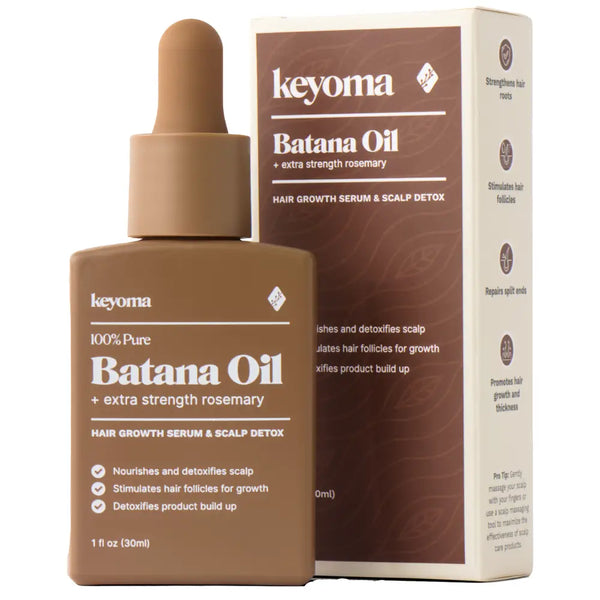
- 30-day supply $50
- 30% off for life $6
- Free haircare essentials kit $33
- Free custom wooden comb $10
- Free scalp massager $15
- Free eco-friendly travel bag $8
Your Cart
Your Cart is empty
Let's fix that
You might like...
Search our store
